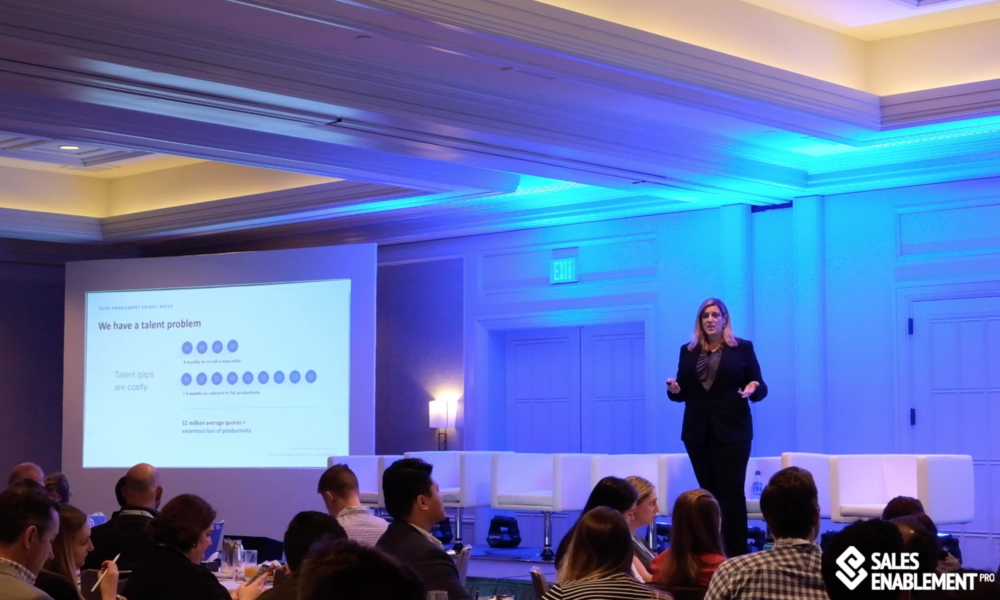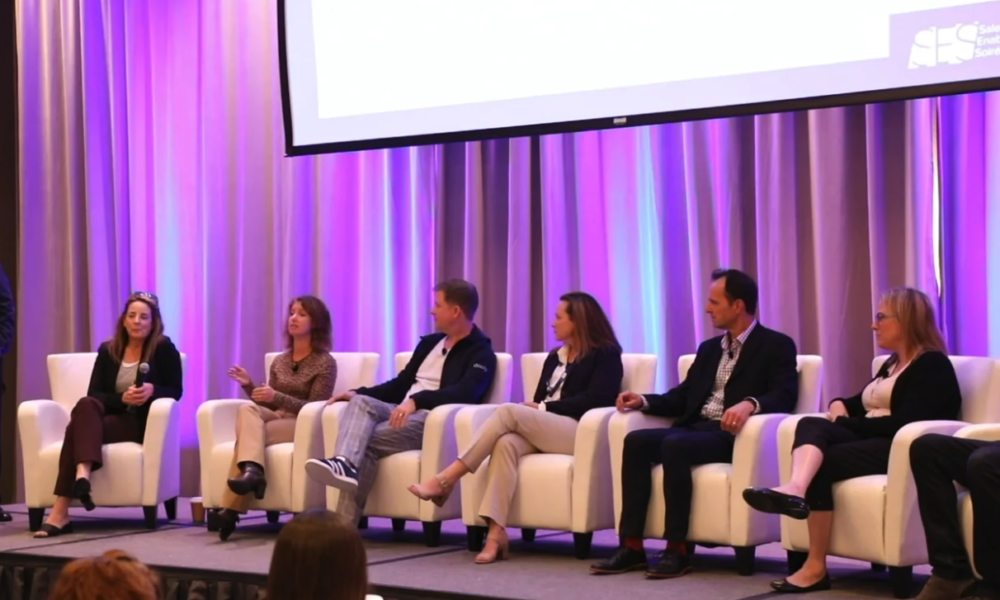Episode 47: Peter O’Neill on the Current State of Sales Engagement
3.4K Views | 14 Min Read
Shawnna Sumaoang: Hi, and welcome to the Sales Enablement PRO podcast. I am Shawnna Sumaoang. Sales enablement is a constantly evolving space, and we are here to help professionals stay up to date on the latest trends and best practices so they can be more effective in their jobs.
Today we are joined by Peter O’Neill. Peter, I would love for you to just introduce yourself, your role, and your organization.
Peter O’Neill: Hi Shawnna, and thanks for inviting me. Well, I’ve been in the IT and marketing world for more than 38 years working in various roles at HP, META Group and most recently 12 years at Forrester Research both as an industry analyst and Research Director. I was RD for all of Forrester’s work around B2B Marketing which included sales enablement.
In fact, I would claim to be one of the first analysts to promote the concept of sales enablement. With my colleagues, I wrote several reports between 2012 and 2014 which defined the role, responsibilities and even anticipated which technologies were going to be necessary for successful sales enablement. In 2015, I worked with a colleague Andy Hoar, who was covering eCommerce at Forrester, and we researched and published that infamous research report entitled: “The Death of the B2B Salesman”. I fondly remember co-presenting that research in the keynote speech at a Forrester conference and provoking a discussion among the audience of 500+ sales enablement professionals.
This year, I’ve become an independent analyst and continue to advise clients on various marketing topics including the vendor selection process for buying marketing automation software. I also work with business partners such as Research in Action, who publish what are called Vendor Selection Matrix reports. Another business partner is the B2B Marketing organization based in London, where I provide some of their premium content.
SS: Your Vendor Selection Matrix report found that when people create their long-list of potential vendors, just 11.9% turn to vendor information and 4.2% to vendor presales. In your opinion, what does this say about the sales environment and its evolution? What do sellers today need to do to cut through the noise?
PO: I have now researched and published nine of these vendor selection matrix reports and they all have returned similar results on that question. We ask 1500 businesses globally: “How do you put together your initial list of vendors”. We are asking specifically about how they select automation software such as sales enablement solutions but most such surveys have shown that, generally, B2B buyers of anything, now rely the very least on what they could be told by the potential vendor – either the website or, even less, the vendor salesperson. Buyers have given up on those meetings because they perceive the seller as only trying to deliver the company or product pitch at the earliest opportunity. “They never seem to want to listen to me first”, is what one client told me the other day.
In terms of cutting through that noise, the seller has to become more empathetic to what the buyer is seeking. Let us assume that the buyer no longer responds to cold calls anymore, so that means that salespeople are only getting meetings based upon a buyer request. So Marketing now has to be part of the supply chain to sales before that meeting, to prepare the seller properly.
What is the buyer looking for in the meeting? What does the buyer already know about you? What type of role does the buyer have in the buying decision?
My ideal of sales enablement would be a system that has gathered and prepared all that information – and puts it at the fingertips of the seller before the meeting.
SS: You also report that almost half of the companies have not yet invested in an SEM solution, which points to a large opportunity for growth in the industry. How do you see the industry growing in the next few years? What changes or trends do you see on the horizon?
PO: Yes, that is what we found when we researched sales enablement investments at the start of this year – 48% of 1500 business executives we interviewed are investing for the first time in this area of software automation. I see this segment as one of the fastest growing Martech markets overall. Not only because of the amount of first-time buyers but because there will be a lot of replacements as well. In the last years, the market was in its early-adopter phase and many firms tended to buy from the first vendor that called and could make a demo. So some of the early market-leaders, with, let’s say, somewhat-satisfied customers, are no longer the innovators today; while newer vendors, but with smaller reputations, are now building up market share.
Indeed, the one thing I noticed in my briefings with the vendors, and this was confirmed in the scores allocated by the 1500 practitioners we surveyed, is that it’s difficult to separate vendors from each other at first glance. I had to dig very deeply at each briefing to find out exactly which customer types were being targeted, and with which value proposition. This is typical of a market in rapid growth, where the RFP process is only just starting to be applied, and where a high close-rate means that marketing concepts like thought leadership or value-based storytelling have not yet taken hold.
This will change in the next years, as the best of the vendors tune up their content marketing and positioning programs in order to win business from the more pragmatic, less adventurous companies – the typical “Crossing the Chasm” scenario (wow, is that book really 19 years old now). I also anticipate considerable vendor consolidation or churn in 2020 as smaller vendors with point solutions lose their customers to a more complete sales engagement management provider.
SS: Your research also found that seller adoption with sales engagement solutions is a top concern and critical success factor. How can companies help encourage adoption of new solutions among reps?
PO: Well, they need to really consider the user experience as their most important success factor. I’ve assisted many clients through their VSP and sat in on their meetings with potential vendors to provide my input as “an outsider”. And I trust that my assessment of the vendors’ offerings and potential to fit into their planned technical architecture was useful. But still I often have the feeling that the client was not really prepared for the full project.
I notice that, when I ask them about their needs and challenges, many aspects are not yet thought through:
- There are no sample business workflows (much of which is outside the software they’ll buy)
- There are no profiles of their potential users (devices, competencies, preferences)
- There are no sample reports or dashboards designed
- There is no prioritization in their list of requirements – all was equally important.
Most process automation projects fail because of a bad fit between project solution and requirements. And when I say “project” I mean much more than the software product. The project solution must cover the complete business scenario to be improved, which is usually only partly through technology – process and organization always needs to be tuned as well.
Sellers are already collecting a massive number of apps onto their devices through their own efforts. The sales enablement system of choice needs to be visible, and recognized as important by the sellers, among that forest. It has to earn its adoption, based on ease of use, accessibility, comfort and applicability to the sellers daily tasks. By the way, my report at the start of this year was titled Sales Engagement Management, not enablement. In the report I argued that the various enablement, training and operations systems will be consolidated for complexity reasons. So I was quite pleased to see that now both Gartner Group and SiriusDecisions are now publishing work under the same heading – sales engagement. My next SEM report is currently in the field, we’re surveying 1500 practitioners first about their preferences and vendor experiences. Then I will add my POV after talking to all the important vendors and plan to publish the new report in February 2020.
SS: Customer-centricity is also mentioned as a core evaluation requirement. When it comes to personalization, what are buyers looking for? What are some strategies for companies to be more customer-centric?
PO: Our first discussion point today was about why buyers do not want to meet sellers — because most of the sellers are not empathetic. Customer-centricity is the process needed to create this empathy. That process requires marketing to collaborate with its sales counterparts in selecting the target accounts, and buyers within the accounts. And to provide content to the seller at the right time that is specific to the needs of the people in the next meeting. Ideally, marketing systems would also distribute customer analytics output like intent alerts. Many companies are now hiring more consultative sellers, ideally with experience in the type of companies they are developing their relationships with – same industry for example. But that is not always needed – some selling scenarios are more about just providing the right price and availability data to a buyer on demand. But even behind those business relationships, there needs to be an account relationship which is developed and managed by people meeting people on a periodic basis to agree on routine pricing and communications.
SS: Partner enablement also seems to be a growing trend and priority in the space, as you mentioned in your report. Why is partner enablement important?
PO: Well, after all, 70% of the world’s trade is done through partners. Traditionally, many manufacturers were somewhat discriminating and only applied their sales enablement programs to their own direct sales force. Business pressure is driving change here as well and most firms now want to treat their partner sales force equally. Many of the sales enablement software vendors recognize this and have functionality to handle this more casual type of user. But this challenge is changing as we speak. What I’ve just described is fine for firms selling physical products (or on-premise software) needing knowledgeable partners to present and position the offer to buyers.
But now almost every industry is morphing to an “as-a-service” business model with some buyers pulling the service based on their own research. But no, channel partners are not being “dis-intermediated” (that strange cliché of the 1990s eBusiness articles) – they’ve become even more influential and advocational. But their business model has changed and they’re more than likely to live off revenues earned from the end-user than the manufacturer they occasionally represent. And instead of resellers or distributors, they are called affiliates, referrers, associations, communities, groups, ambassadors. So the next generation challenge for many companies is: how do you enable those partners.
SS: In your opinion, what are the top things people should look for when evaluating SEM solutions and why?
PO: My priorities would be to check out how the system was adopted in other companies. What do sellers say about the system – that is the most important feedback I would seek from reference customers. Then I would review the devices preferred by my own sales colleagues and ensure that those platforms can be covered by the SEM solution. The only exception would be if I had a somewhat older-fashioned sales culture that has not yet adopted portable devices extensively.
Then, I would launch the SEM project with a general distribution of modern devices like a tablet.
Another priority for me would be the ability to get feedback out of the system about usage and effectiveness of the content and data being fed into the system. At some point, you need to be able to provide ROI data to your management and this is key to being able to do that.
SS: Well thank you so much, Peter, I really enjoyed talking to you today.
PO: It’s been my pleasure.
SS: To our audience, thanks for listening. For more insights, tips, and expertise from sales enablement leaders, visit salesenablement.pro. If there is something you would like to share or a topic you want to know more about, let us know. We would love to hear from you.
















